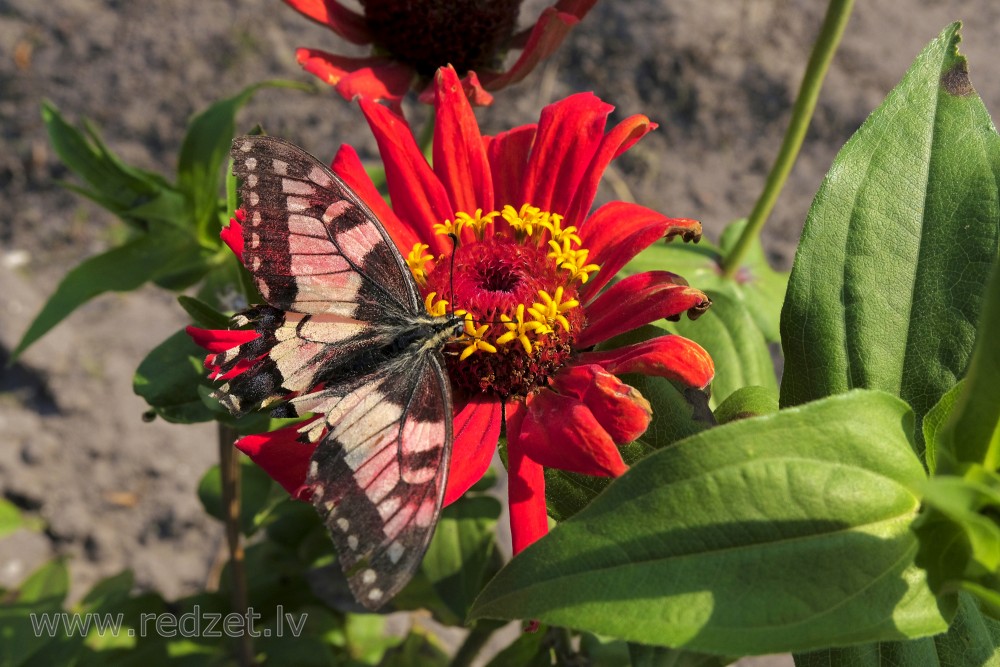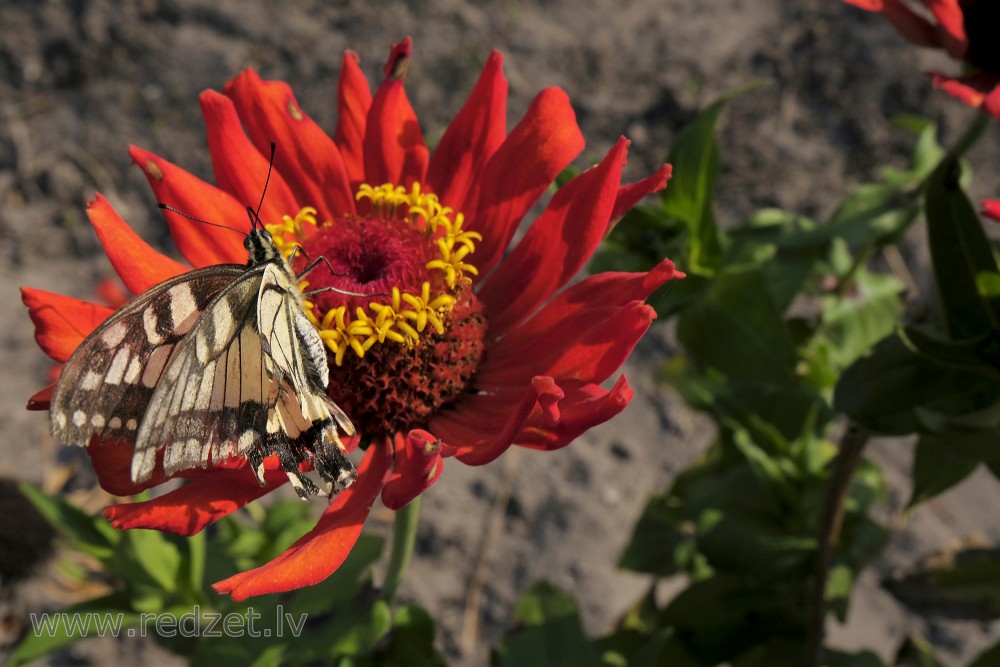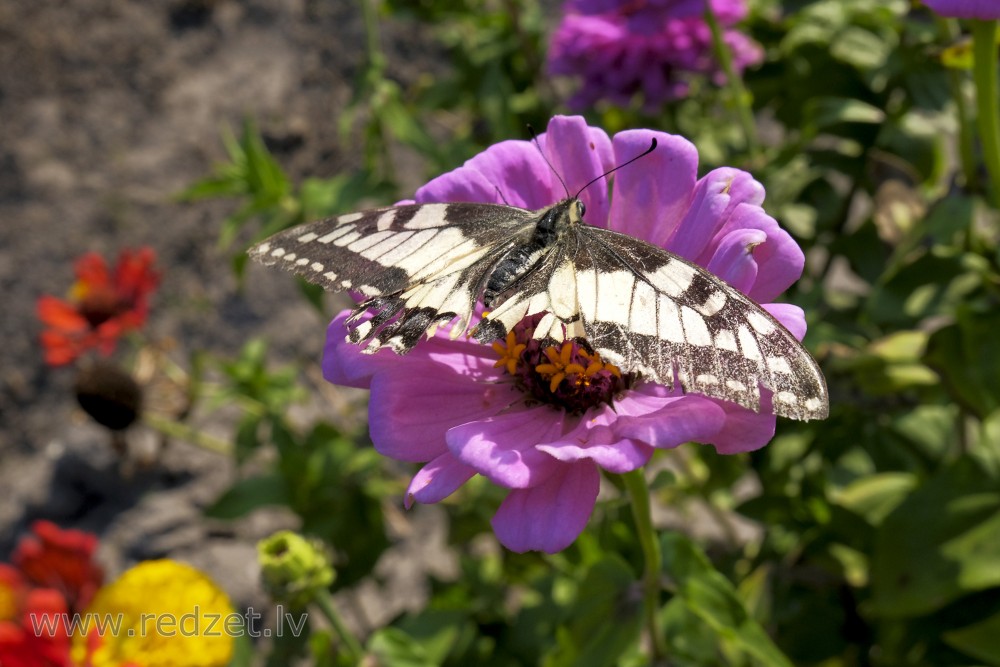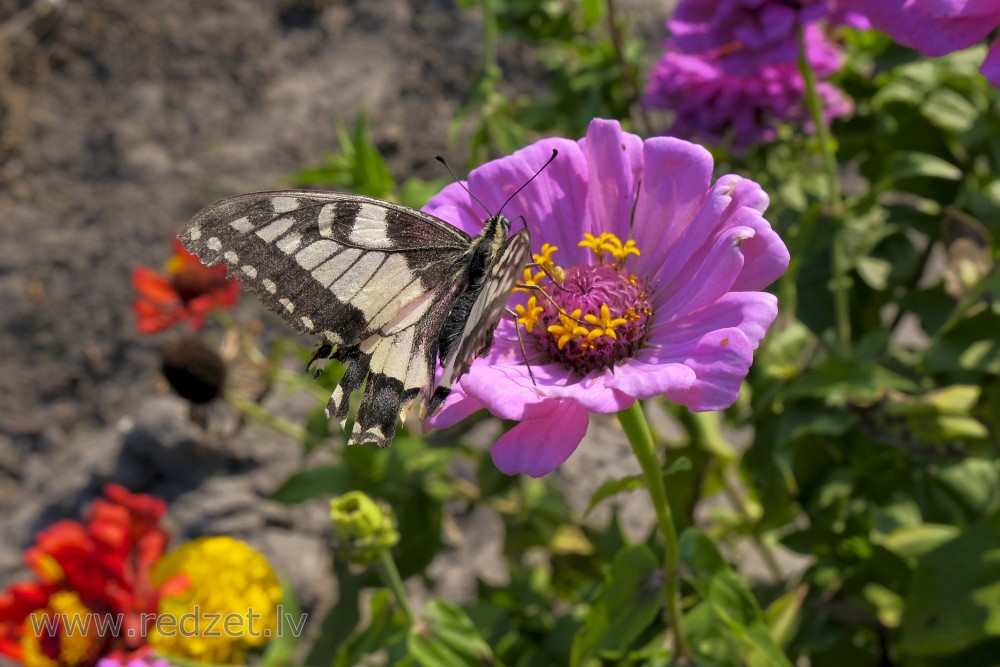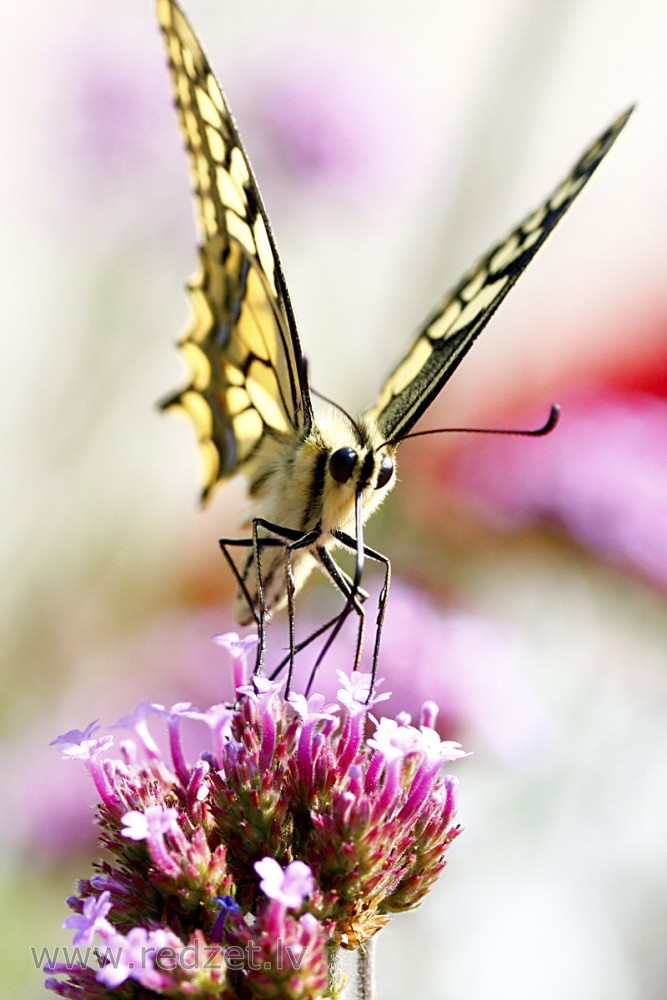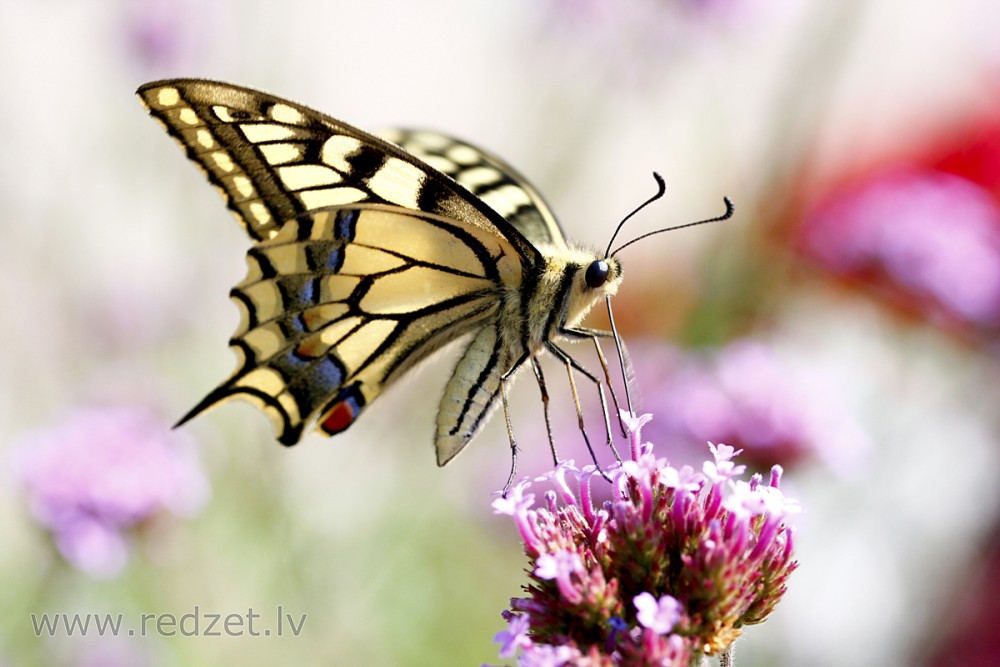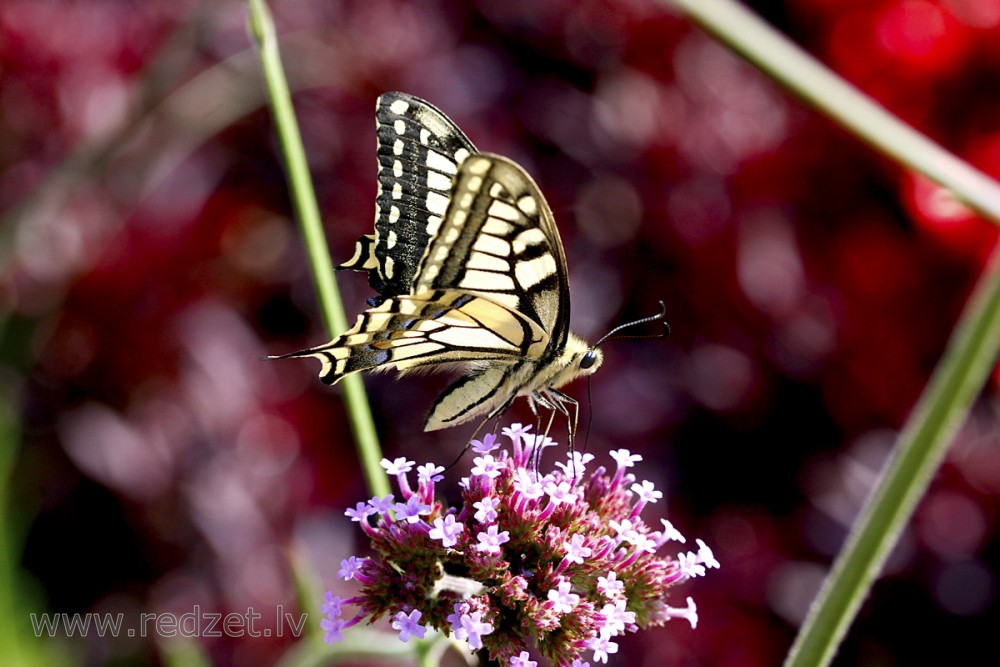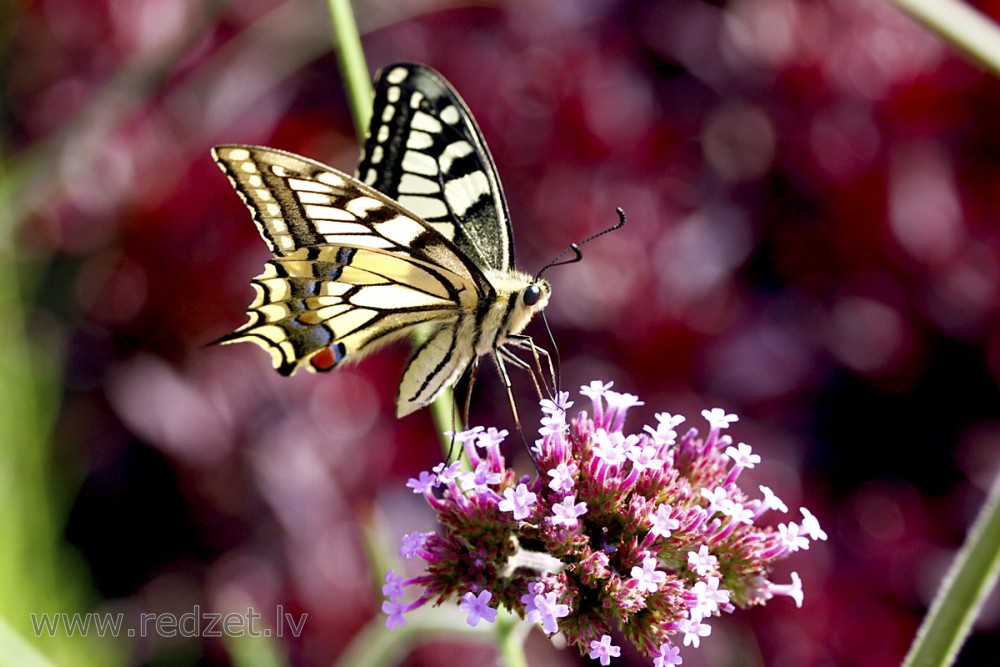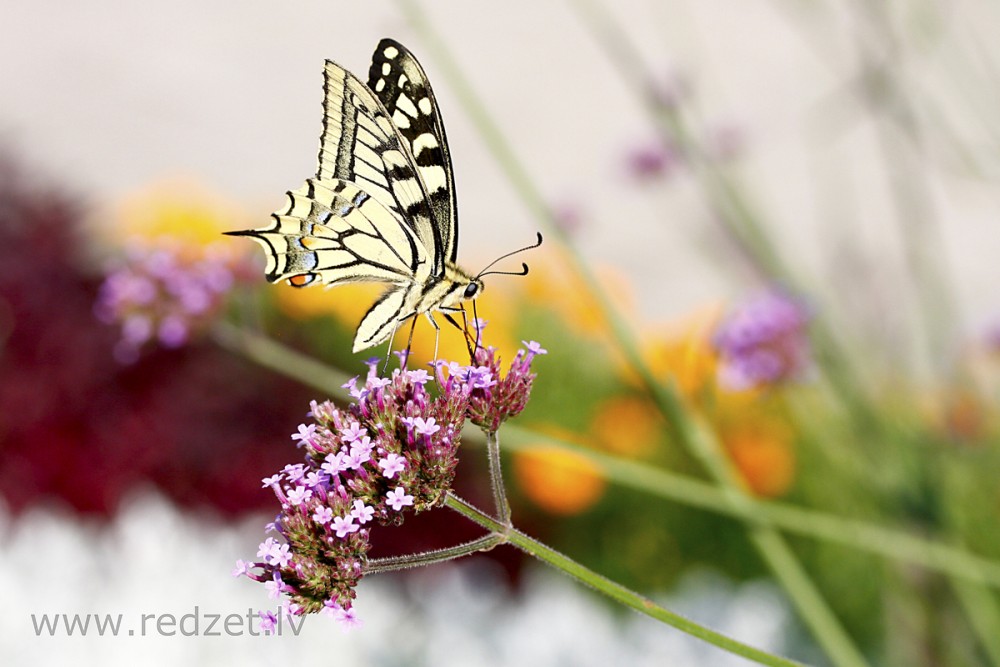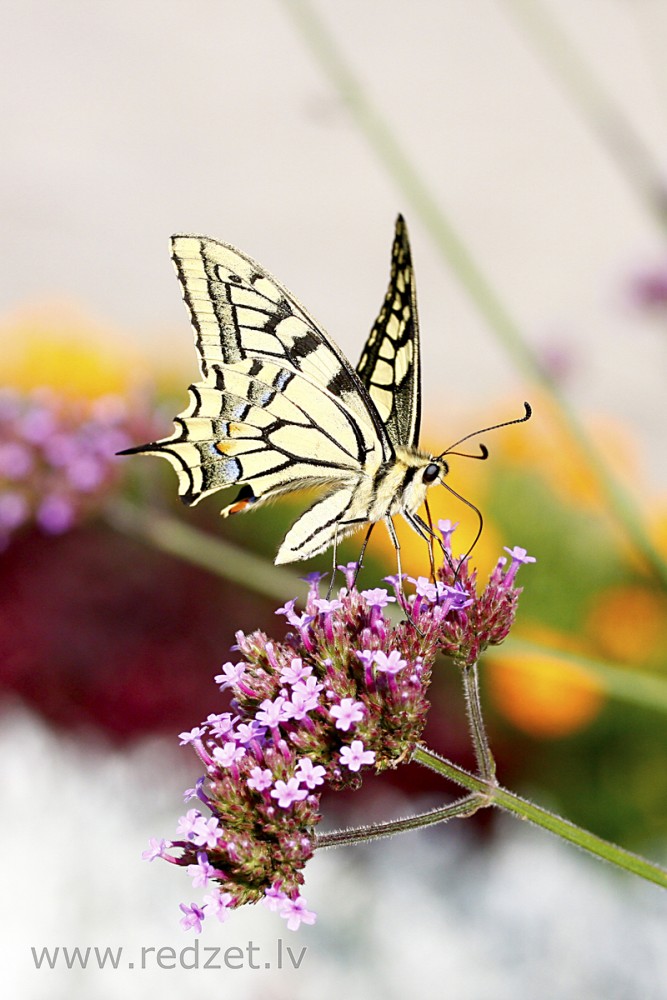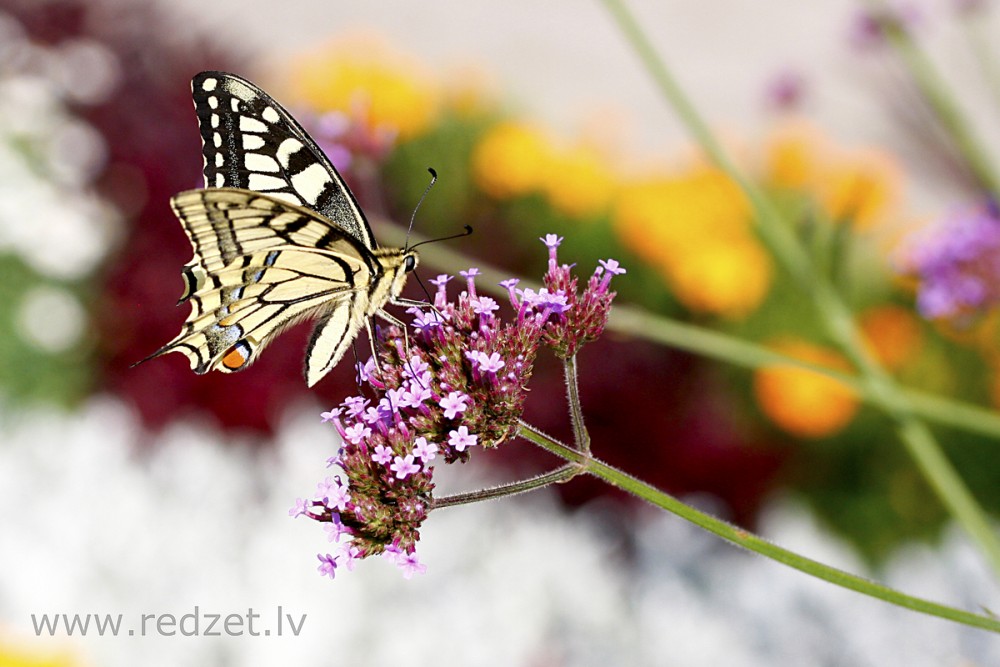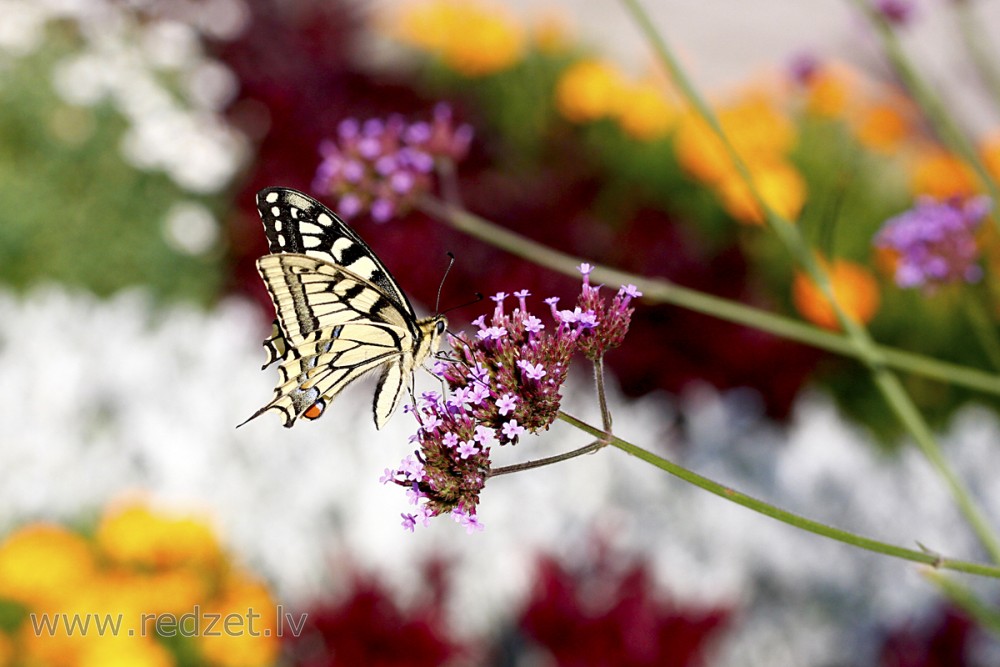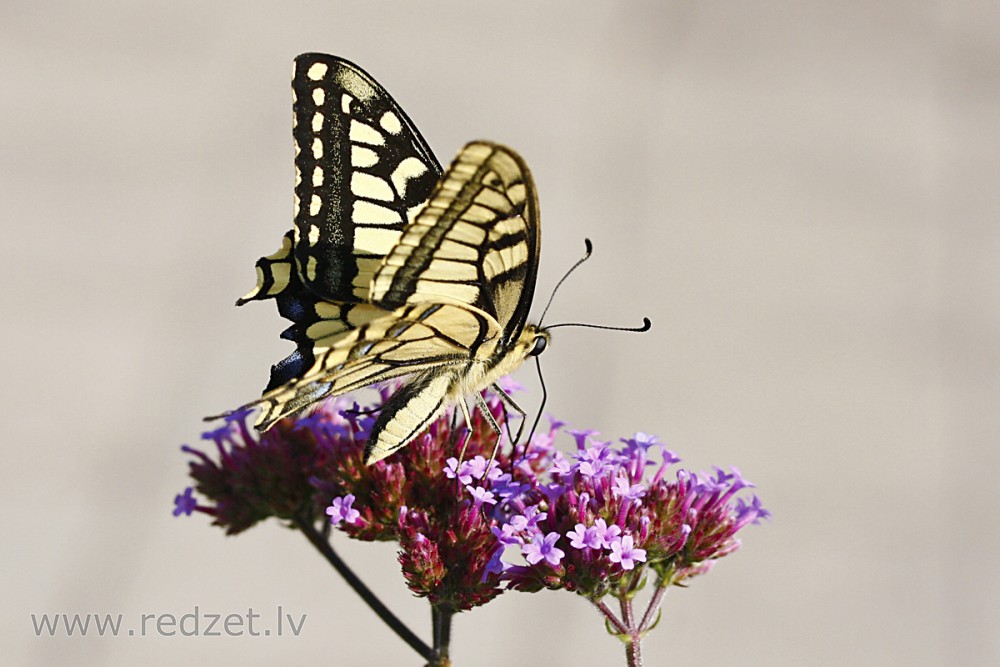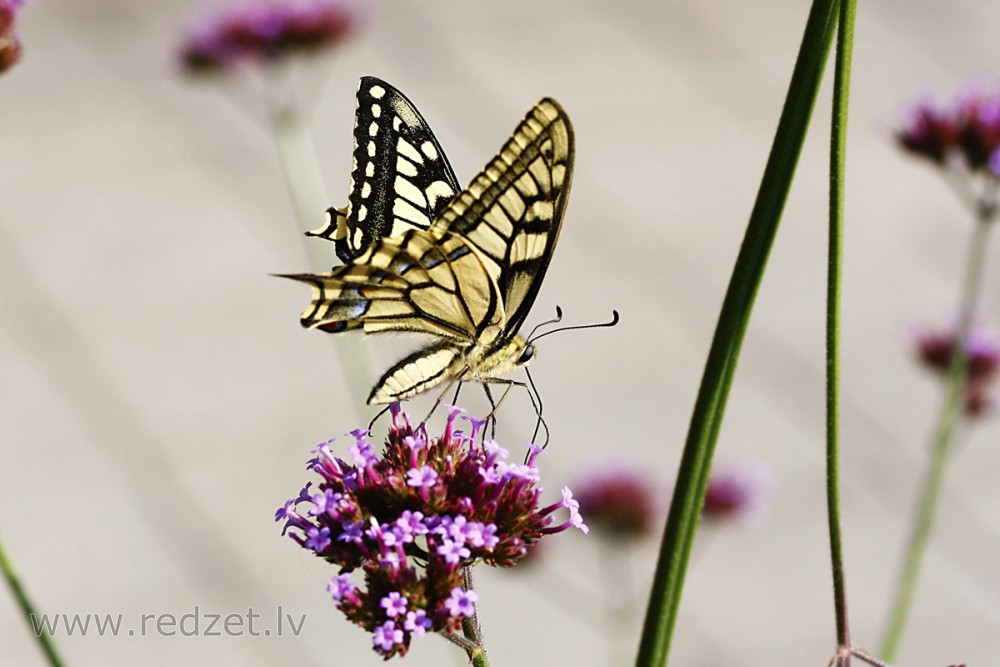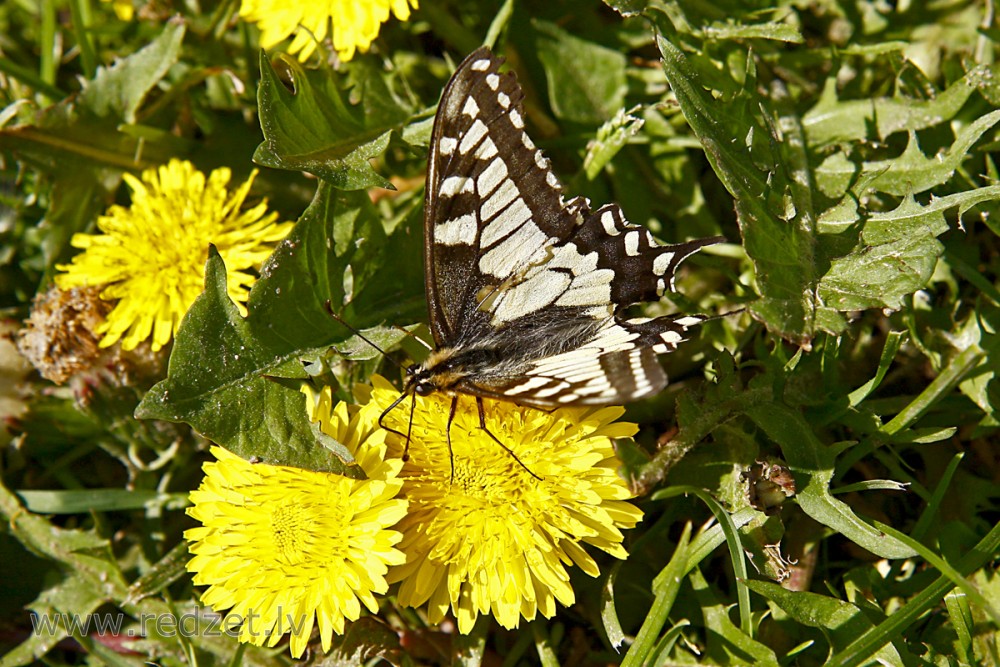(Papilio machaon) Old World swallowtail
Papilio machaon, the Old World swallowtail, is a butterfly of the family Papilionidae. The butterfly is also known as the common yellow swallowtail or simply the swallowtail (a common name applied to all members of the family, but this species was the first to be given the name). It is the type species of the genus Papilio.
Distribution and status
This butterfly is present throughout the entire Palearctic region, ranging from Russia to China and Japan, (including the Himalayas and Taiwan), and across into Alaska, Canada, and the United States, and thus, is not restricted to the Old World, despite the common name.
In Asia, it is reported as far south as Saudi Arabia, Oman, the high mountains of Yemen, Lebanon, Iran and Israel. In southern Asia, it occurs in Pakistanand Kashmir, northern India (Sikkim, to Assam, and Arunachal Pradesh), Nepal, Bhutan, and northern Myanmar.
This butterfly is widespread in Europe. In the United Kingdom, it is limited to a few areas in the Norfolk Broads of East Anglia. It is the UK's largest resident butterfly. The monarch (Danaus plexippus) is slightly larger, but is only a rare vagrant.
As P. machaon is widespread throughout Eurasia and often common, it is not threatened as a species. It is listed as "vulnerable" in the South Korean and Austrian Red Data Books, and in the Red Data Book of the former Soviet Union. In Armenia the species demonstrates stable population trend and is assessed as Least Concern.
In some countries, P. machaon and its subspecies are protected by law. Papilio machaon machaon is protected by law in six provinces of Austria, Czech Republic, Slovakia, Hungary, Romania, and Moldova. The species is protected in the United Kingdom, and subspecies verityi is protected in India.
Description
The imago typically has yellow wings with black vein markings, and a wingspan of 65–86 millimetres (2.6–3.4 in). The hindwings of both sexes have a pair of protruding tails which give the butterfly its common name from the resemblance to the birds of the same name. Just below each tail is a red eye spot.
It can be distinguished from Papilio hospiton, which occurs sympatrically with it on Corsica and Sardinia, by the longer "tails" on the hindwings. It can be told apart from the Algerian species Papilio saharae only by counting the segments on the antennae.
Life cycle
There are usually two to three broods in a year, but in northern areas, the species may be univoltine. In some places such as the UK, some will pupate and emerge in the same year and others will overwinter as pupae before emerging the following year, a situation known as being partially bivoltine.
The caterpillar spends the first part of its life with the appearance of a bird dropping, an effective defense against predators. As the caterpillar grows larger, it becomes green with black and orange markings. It has a defense against predators in the form of an osmeterium, which consists of retractable, fleshy projections behind its head that can release a foul smell if disturbed, which deters insects, but not birds.
Breeding
Old World swallowtails can easily be bred in captivity. Butterflies can be lured to lay eggs in a backyard garden by keeping plenty of caterpillar food plants in it. Common rue plants are highly appropriate for this.
Caterpillars are very fast eaters; they will spend their time eating or resting before they resume their eating again. Once a sufficient size has been attained, they will attach themselves to any available structure with their silky threads. They will then stay still until they become pupae. This will take about a day.
Once in the pupa stage, they can be very carefully removed from the pot and placed in a warm location. The time the butterfly takes to form and come out depends on the temperature. If kept in warm summer temperatures, it will take about one or two weeks to form. On the other hand, if the temperature is lower, it might take as long as several months until it feels the weather is warm enough.
Pupae should not be kept on an impermeable surface, since when they eclose a bit of liquid will be released, this means the butterfly would stay wet and might not be able to fly. Absorbing paper such as the one used in kitchens is advisable.
en.wikipedia.org
https://en.wikipedia.org/wiki/Papilio_machaon
Continue reading